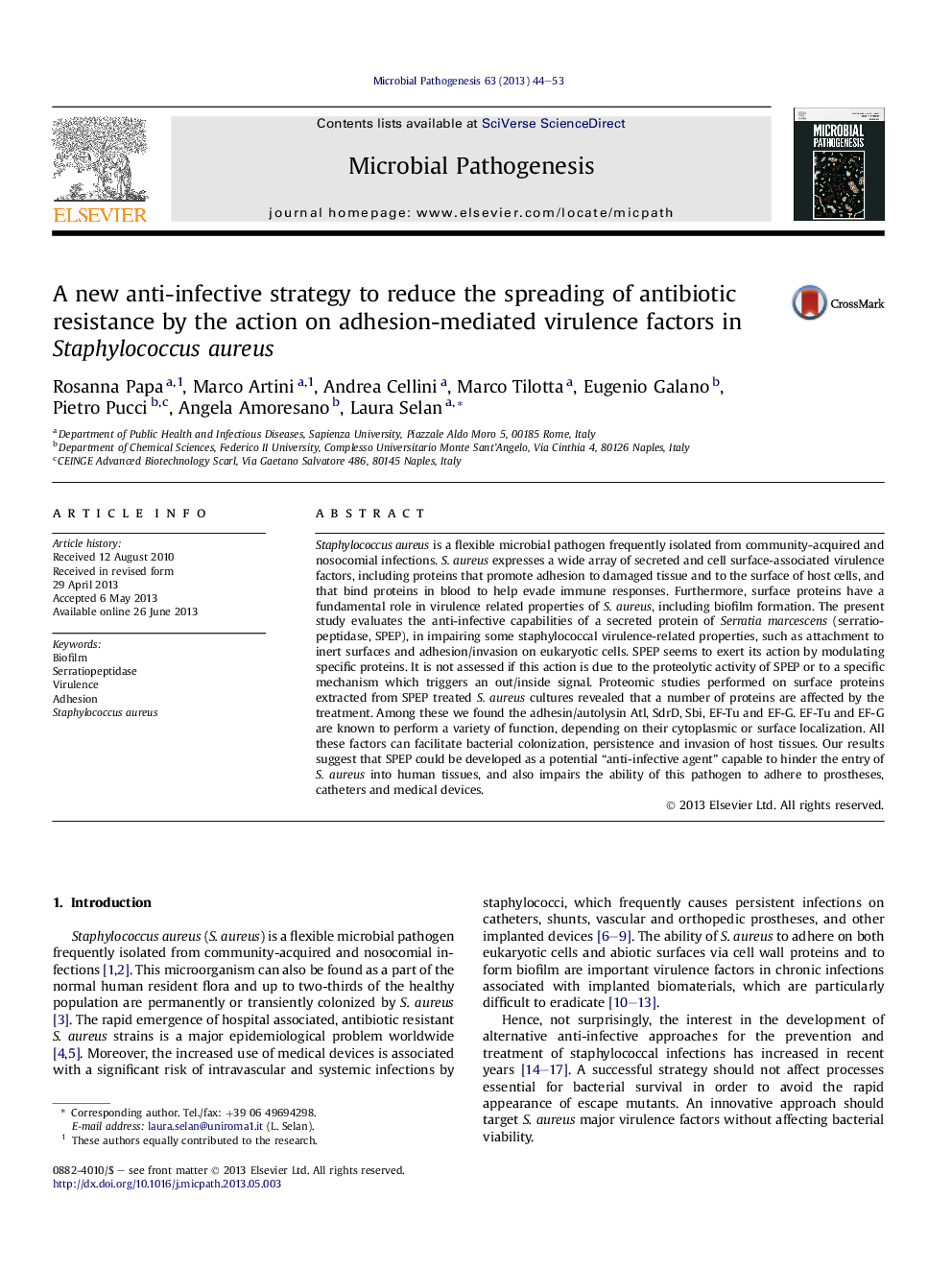| کد مقاله | کد نشریه | سال انتشار | مقاله انگلیسی | نسخه تمام متن |
|---|---|---|---|---|
| 3416661 | 1593722 | 2013 | 10 صفحه PDF | دانلود رایگان |

• An innovative approach targets virulence factors without affecting bacterial viability.
• Serratiopeptidase impairs the ability to form biofilm of Staphylococcus aureus.
• SPEP affects the invasion capability of either MRSA and MSSA on epithelial cells.
Staphylococcus aureus is a flexible microbial pathogen frequently isolated from community-acquired and nosocomial infections. S. aureus expresses a wide array of secreted and cell surface-associated virulence factors, including proteins that promote adhesion to damaged tissue and to the surface of host cells, and that bind proteins in blood to help evade immune responses. Furthermore, surface proteins have a fundamental role in virulence related properties of S. aureus, including biofilm formation. The present study evaluates the anti-infective capabilities of a secreted protein of Serratia marcescens (serratiopeptidase, SPEP), in impairing some staphylococcal virulence-related properties, such as attachment to inert surfaces and adhesion/invasion on eukaryotic cells. SPEP seems to exert its action by modulating specific proteins. It is not assessed if this action is due to the proteolytic activity of SPEP or to a specific mechanism which triggers an out/inside signal. Proteomic studies performed on surface proteins extracted from SPEP treated S. aureus cultures revealed that a number of proteins are affected by the treatment. Among these we found the adhesin/autolysin Atl, SdrD, Sbi, EF-Tu and EF-G. EF-Tu and EF-G are known to perform a variety of function, depending on their cytoplasmic or surface localization. All these factors can facilitate bacterial colonization, persistence and invasion of host tissues. Our results suggest that SPEP could be developed as a potential “anti-infective agent” capable to hinder the entry of S. aureus into human tissues, and also impairs the ability of this pathogen to adhere to prostheses, catheters and medical devices.
Journal: Microbial Pathogenesis - Volume 63, October 2013, Pages 44–53